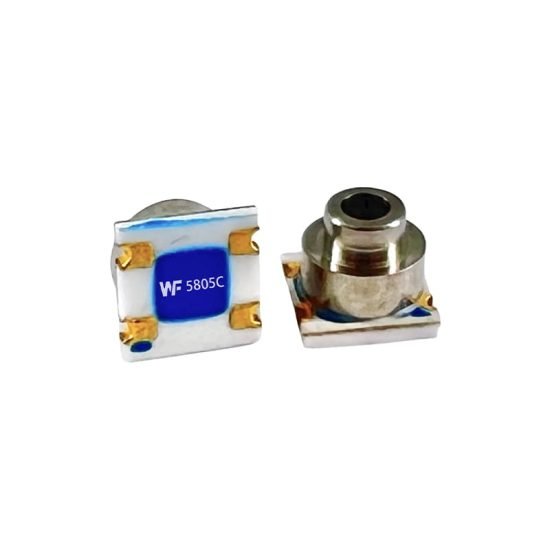Katalog
Water pressure sensors play crucial roles in underwater operations, marine monitoring, and diving equipment. Selecting appropriate sensors requires comprehensive evaluation of accuracy requirements, pressure range, environmental compatibility, packaging design, and cost-effectiveness.
1. Accuracy and Stability Requirements
Measurement Precision Importance
Accuracy stands as the primary selection criterion for water pressure sensors. For diving applications, depth measurement errors directly impact diver safety. Modern MEMS sensors achieve 0.05% full-scale accuracy, significantly exceeding traditional analog devices. Temperature coefficient remains critical, with quality sensors maintaining drift within 0.25% full-scale range.
Long-term Stability Considerations
Stability determines sensor reliability during extended operation. Marine environments present saltwater corrosion, temperature variations, and mechanical vibrations affecting sensor performance. Annual drift should remain below 0.25% full-scale for reliable operation in demanding conditions.

2. Pressure Range and Dynamic Response
Operating Pressure Range Determination
Different applications demand vastly different pressure capabilities. Dive watches typically operate within 0-10 bar range, while deep-sea exploration requires hundreds of bars measurement capability. Sensors should operate within 30-80% of their full range for optimal accuracy while avoiding overload damage.
Response Time and Dynamic Characteristics
Rapid response proves critical for safety applications. Modern MEMS sensors achieve 2.5-millisecond startup times, meeting real-time monitoring demands. Dynamic response encompasses both speed and frequency characteristics for applications monitoring water flow pulsations or wave effects.
3. Environmental Compatibility and Package Protection
Seawater Environment Compatibility
Seawater’s corrosive nature demands stringent material requirements. Stainless steel diaphragms, titanium housings, or ceramic packages provide corrosion resistance. Sensors typically feature protective gel filling preventing seawater penetration. IP68 protection rating represents minimum requirements for underwater applications.
Temperature Range and Compensation
Marine environments experience wide temperature variations from -2°C in polar regions to 40°C in tropical shallows. Sensors require broad operating ranges, typically -20°C to +85°C. Built-in temperature compensation circuits effectively minimize temperature impact on measurement accuracy.
4. Interface Methods and System Integration
Digital Interface Advantages
Modern water pressure sensors employ I2C, SPI, or UART digital interfaces for microcontroller system integration. Digital outputs eliminate analog signal transmission noise, improving system reliability. Interface protocol compatibility and data transmission rates must satisfy real-time requirements.
Power Consumption and Management
Low-power design proves essential for battery-powered underwater devices. Modern MEMS sensors achieve working currents of tens of microamps, with standby currents reaching nanoamp levels. Sleep mode functionality further extends battery life in energy-constrained applications.
5. Cost-Effectiveness and Reliability Assessment
Life-Cycle Cost Analysis
Sensor costs encompass not only purchase price but also integration, maintenance, and replacement expenses. High-precision sensors, despite higher initial investment, provide stability and reliability reducing long-term maintenance costs. Large-volume applications benefit from economies of scale in procurement.
Supply Chain Stability
Selecting established manufacturers ensures supply chain stability and technical support. Product certifications and quality system compliance provide reliability assurance. Long-term supply commitments prove particularly important for applications with extended product lifecycles.
Kesimpulan
Water pressure sensor selection represents a comprehensive decision process requiring balanced consideration of accuracy, range, environmental compatibility, interface compatibility, and cost factors. MEMS technology advancement provides superior solutions for water pressure measurement, but proper selection still demands thorough understanding of application requirements and technical specifications.
Pengenalan di atas hanya sekilas tentang penerapan teknologi sensor tekanan. Kami akan terus mengeksplorasi berbagai jenis elemen sensor yang digunakan di berbagai produk, cara kerjanya, serta kelebihan dan kekurangannya. Jika Anda ingin mengetahui detail selengkapnya tentang apa yang dibahas di sini, Anda dapat melihat konten terkait nanti di panduan ini. Jika Anda terdesak waktu, Anda juga dapat mengklik di sini untuk mengunduh rincian panduan ini Data PDF Produk Sensor Tekanan Udara.
Untuk informasi lebih lanjut tentang teknologi sensor lainnya, silakan Kunjungi Halaman Sensor Kami.
